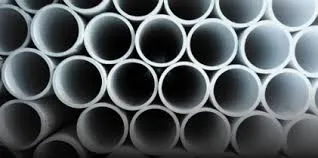Sep . 24, 2024 02:34 Back to list
Comparing PPR and PVC Pipe Manufacturers for Optimal Plumbing Solutions
PPR Pipe vs. PVC Pipe Manufacturers A Comparison
In the realm of plumbing and piping systems, the choice between PPR (Polypropylene Random Copolymer) and PVC (Polyvinyl Chloride) pipes has become a notable topic for both manufacturers and consumers alike. Each type of pipe brings unique properties that cater to different needs and applications. This article delves into the key differences, advantages, and considerations manufacturers face when producing these pipes.
Material Properties
PPR pipes are known for their excellent thermal resistance and can handle temperatures up to 95°C, making them ideal for hot water applications. They exhibit good chemical resistance and are often used in hot and cold water supply systems in residential and commercial buildings. Conversely, PVC pipes are versatile but primarily suited for cold water applications. They have a lower temperature tolerance, typically up to 60°C, limiting their use in high-temperature environments.
Durability and Longevity
When it comes to durability, PPR pipes outperform PVC pipes in several aspects. PPR is resistant to impact and offers better resistance to cracking under stress. This makes it suitable for harsh environmental conditions. Furthermore, PPR pipes have a longer lifespan, often exceeding 50 years, whereas PVC pipes generally last around 25 to 30 years, depending on the environmental and usage conditions.
Installation and Connection Methods
ppr pipe vs pvc pipe manufacturers

From a manufacturing perspective, both PPR and PVC pipes are relatively easy to install, but their connection methods differ significantly. PPR pipes are usually welded using a heat fusion process, resulting in solid joints that enhance system integrity. On the other hand, PVC pipes are typically joined using solvent cement, a process that is quick but can lead to weaknesses at the joints if not executed properly. Manufacturers need to consider the skill level of installation personnel when choosing production methods.
Cost Implications
Cost is a critical factor for manufacturers and consumers alike. PVC pipes are generally less expensive than PPR pipes, making them an attractive option for budget-conscious projects. However, the long-term durability and reduced maintenance costs of PPR piping may offset the higher initial investment. Manufacturers should weigh the initial costs against the potential for long-term savings when advising customers on their piping options.
Environmental Considerations
In recent years, environmental sustainability has become an essential consideration for pipe manufacturers. PPR pipes are often regarded as more eco-friendly due to their recyclable nature and lower environmental impact during production. PVC, while economical and widely used, can have adverse environmental effects due to the chemicals released during its production and disposal processes. Manufacturers focusing on sustainability may prefer PPR to align with eco-conscious consumers.
Conclusion
When it comes to choosing between PPR and PVC pipes, manufacturers and consumers need to consider various factors such as material properties, durability, installation methods, costs, and environmental impact. PPR pipes are advantageous for high-temperature and long-life applications, while PVC pipes offer cost-effective solutions for cold water systems. Ultimately, the decision will depend on specific project requirements, making it essential for manufacturers to understand the needs of their customers and provide informed guidance. In a competitive market, manufacturers that can clearly articulate the benefits and limitations of each pipe type will likely find greater success.
-
High-Quality PVC Borehole Pipes Durable & Versatile Pipe Solutions
NewsJul.08,2025
-
High-Quality PVC Perforated Pipes for Efficient Drainage Leading Manufacturers & Factories
NewsJul.08,2025
-
High-Quality PVC Borehole Pipes Durable Pipe Solutions by Leading Manufacturer
NewsJul.08,2025
-
High-Quality PVC Borehole Pipes Reliable PVC Pipe Manufacturer Solutions
NewsJul.07,2025
-
High-Quality UPVC Drain Pipes Durable HDPE & Drain Pipe Solutions
NewsJul.07,2025
-
High-Quality Conduit Pipes & HDPE Conduit Fittings Manufacturer Reliable Factory Supply
NewsJul.06,2025

